Have you ever wondered why are projectors so expensive? You’ve probably shopped around and seen perfectly capable 720p or even 4k projectors for a few hundred bucks, yet many popular name-brand models start at $1,000 or more.
Turns out, the initial purchase price is just part of the story. Projector companies don’t always advertise the additional costs of ownership upfront.
Things like expensive replacement lamps, filters that need regular cleaning or swapping, and mounting hardware can add up over the lifetime of most projectors.
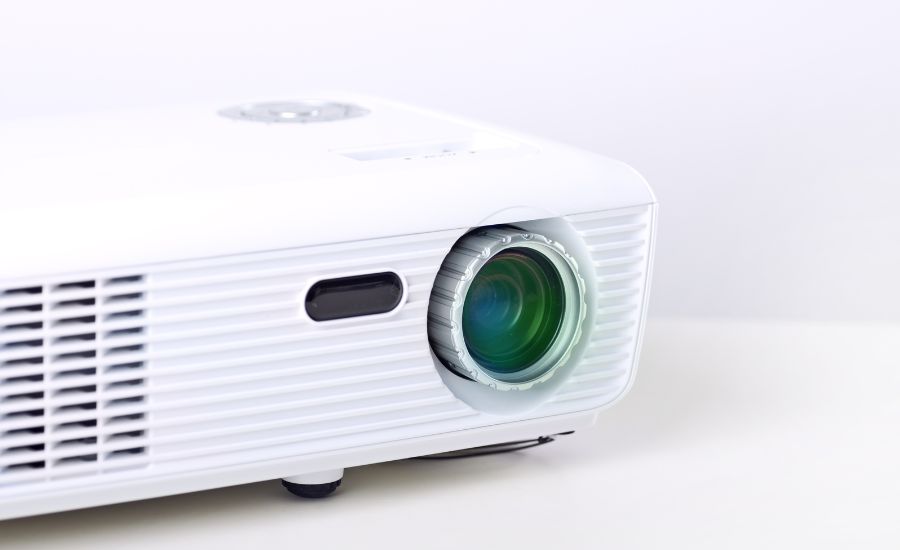
The good news is, if you go in with eyes open to the potential hidden costs, you can make a smarter buying decision and avoid budget surprises down the road.
Here’s a quick look at the additional fees behind the enticing price of LCD projectors.
High-Tech components drive up costs
Projectors are expensive for good reason. All that technology crammed into a little box doesn’t come cheap.
First off, the light source
Whether it’s an LED, a laser projector, or a single high-powered bulb, it has to be powerful enough to project a huge, bright image. Bulb replacement costs can cost $200-$500 each.
Image processing unit
It can be compared to a computer that takes an input signal and digitizes it for projection.
Too much light blurs the image, degrading image quality and contrast.
But a bright laser light projector combined with a gray or white retractable screen provides a high-quality image, and a gray or white retractable screen supports it, video processor chips and memory chips are expensive to manufacture.
Don’t forget the lens assembly
Made up of several high-precision lenses that focus and resize the image.
Larger venues need longer throw lenses so the portable projectors can be mounted farther from the screen.
These telephoto lenses are difficult to manufacture and add significantly to the overall cost of a mini projector.
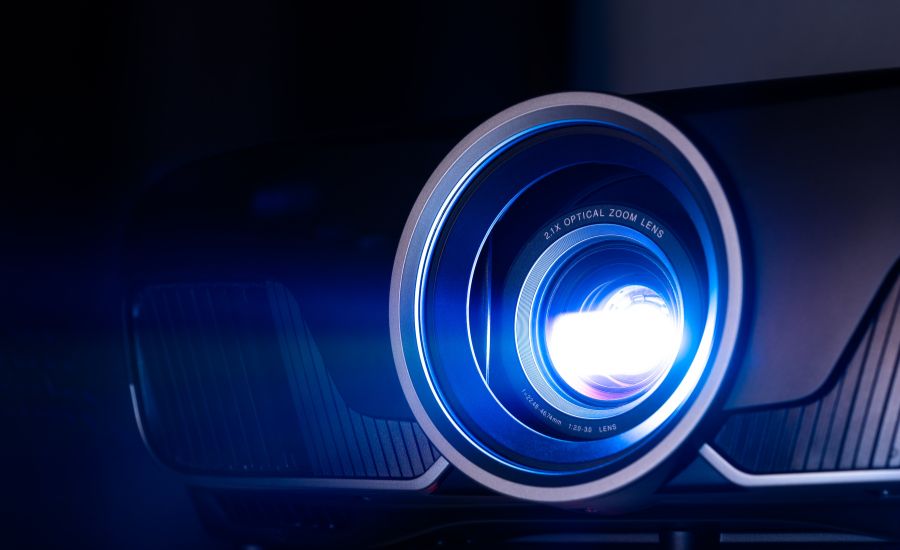
Installation and calibration also play a role in the pricing
For a professional setup, you’ll need mounting brackets, cables, and a technician to properly configure the projector for maximum resolution in your specific space.
When you add in research and development costs, company and exceed overhead costs, and retailer markups, you can understand why a high-quality 4K projector for large venues can easily cost $50,000 or more.
But with rapidly improving technology and more mass production, prices are starting to come down.
So, if you can hold off for a while, that new projector you’ve been dreaming of may become a lot more affordable.

Limited economies of scale
Projectors are expensive for good reason.
Projectors are made in much smaller quantities, unlike TVs or monitors with huge production runs.
This means companies can’t take advantage of economies of scale to lower costs.
When a company makes 100,000 of the same TV model, it’s far cheaper per unit than if they only make 1,000 projectors.
Parts are purchased in massive bulk, manufacturing processes are extremely efficient, and fixed costs are spread over a huge number of units.
Projector companies don’t have this luxury.
Components in LCD projectors like LCD (liquid crystal display projectors) panels, projector bulbs, and lenses also tend to cost more for projectors.
These specialized parts often require expensive materials and precision engineering, pushing up prices.
Projectors also need powerful lamps to produce bright images, and these lamps frequently need replacement, adding to the overall cost of ownership of projector screens.
Better resolution and just a few features like 3D or short throw also bump up the price tag.
If you want 4K, high-contrast ratio, or ultra-short throw, be prepared to pay a premium.
The technology and components to support these capabilities don’t come cheap.
At the end of the day, you’re paying for a very versatile device that can produce huge, high-quality images.
And like any niche product, part of the cost comes down to the simple fact that most projectors cater to a smaller market.
A good projector should provide many years of big-screen enjoyment.
You can find an option that fits your needs and budget.
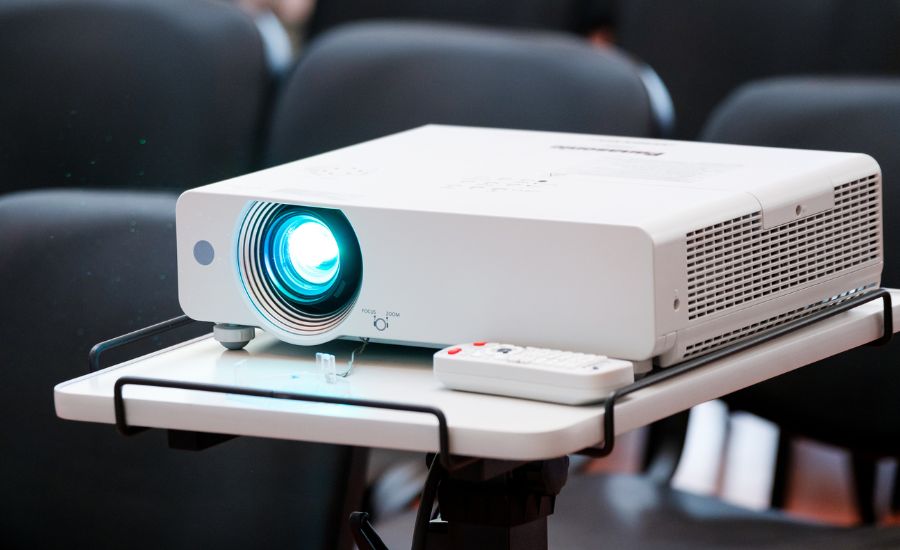
Short product lifecycles require constant investment
Although the upfront cost of a DLP projectors may seem high, manufacturers have to account for the short lifecycle of the technology inside.
DLP Projectors components become outdated quickly, requiring companies to constantly invest in research and development to stay up to date.
The core parts inside DLP projectors like the light source, imaging chips, and other components are constantly improving and evolving.
The technology used today will likely be outdated within a couple of years as brighter, better resolution and more efficient parts become available.
Projector companies have to keep up by releasing new models to stay competitive.
They pass on these costs to consumers in the form of higher prices.
The light source in a projector, typically a lamp or LED, only lasts a few thousand hours before it needs replacement.
And the technology used in the light source is also constantly changing to achieve optimal brightness and color.
Imaging chips, like DLP (digital light projection) or LCD chips, are the same as digital light projection – high-resolution, more vivid chips are always in development to improve quality.
All of these frequent upgrades and short lifecycles of a standard led projector can add to the overall projector prices of manufacturing and selling LCD projectors.
While it may seem like you’re paying a premium upfront, you’re helping fund the next generation of projectors and continued innovation.
Of course, LED projectors with “older” but still capable technology inside can save you money if you don’t need the latest and greatest.
But in general, frequent new product releases mean higher but often unavoidable price tags for the latest and most cutting-edge projectors.
So the next time you’re sticker shocked by the price of DLP projectors, remember that you’re not just paying for the components inside that single unit.
You’re supporting the never-ending cycle of progress that allows projectors to become brighter, higher resolution, and more lifelike every year.
And that level of constant innovation and improvement doesn’t come cheap!
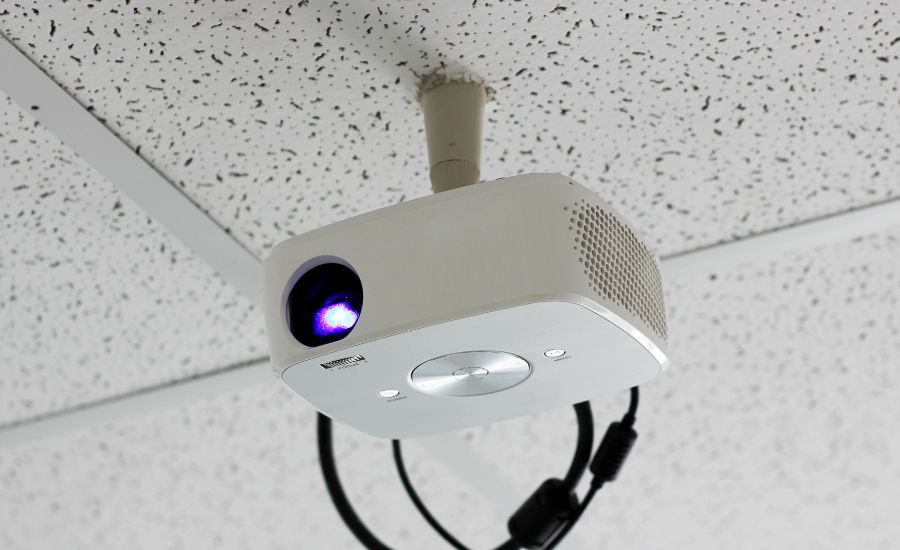
Demand for advanced features
DLP and LCD projectors are expensive for a few reasons, but a big one is that people want the latest and greatest features.
Early adopters are willing to pay top dollar to have it first when new technology comes out.
As projectors have evolved, companies have developed new features to improve the viewing experience.
Things like higher resolution, greater brightness, and wider color gamut allow for a more immersive experience, but they also increase the cost to produce the projector.
For example, 4k projectors with high resolution and high dynamic range (HDR) projectors provide a sharper, more vivid picture but require more advanced components.
These cutting-edge features are always introduced at a premium price point before eventually becoming more mainstream and affordable.
You’ll pay extra for additional features if you want the best picture quality and performance.
4K or 8K resolution for an ultra-high-definition picture.
High brightness (3,000+ lumens) for vibrant images even in well-lit rooms.
Wide color gamut (DCI-P3 or Rec. 2020) for more realistic colors.
Integrated smart TV platform to access streaming apps right on the front projector screen with built-in speakers.
While basic projectors can still work great, most consumers today want an immersive experience with theater-quality video and premium features.
Manufacturers know this and price their products accordingly based on the technology and components included.
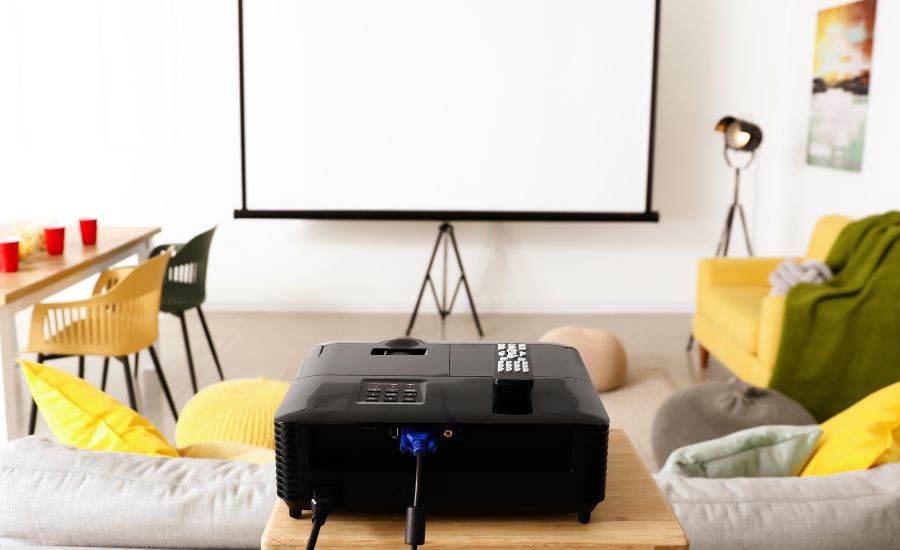
Projector margins fund innovation
Projector companies don’t just sell hardware — they’re also funding the next generation of display technology.
A sizable portion of a projector’s retail price goes toward research and development (R&D) of new features and capabilities.
HDTVs have fixed resolutions.
Projector images can be adjusted by varying the distance of the projector from the screen.
These innovations don’t come cheap, but they’re necessary to keep projectors relevant in an increasingly high-tech world.
Breakthroughs in areas like solid-state lighting, dlp, LCD projectors, and 4K UHD all require major investments to achieve.
By supporting projector companies through your purchases, you enable them to keep pushing the envelope of what’s possible.
The capabilities we take for granted today, like bright 4K projectors small enough for home theaters, were mere concepts just a few years ago.
Who knows what incredible display innovations your next LED projectors purchase might help bring to life?
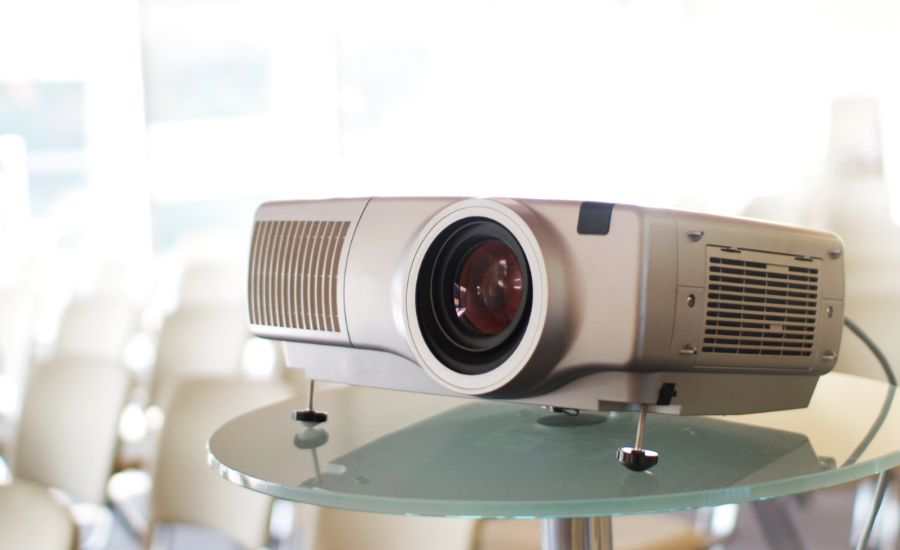
Conclusion
So the next time you’re sticker-shocked why are projectors so expensive, remember there’s more going on than meets the eye.
At the end of the day, an affordable projector may seem like a steal, but you’ll likely end up paying for it in the long run through amazing image quality, replacement projector bulbs, and a shorter lifespan.
So do yourself a favor and consider the total cost of ownership – your eyes and wallet will thank you later.
FAQ
Why are projectors so expensive?
LED Projectors contain advanced technology like high-powered lamps, precise optics, and image processing components that allow them to display huge, high-quality images.
These specialized parts and the R&D required to develop them factor into why projectors so expensive.
LED Projectors also have a more limited market than TVs and monitors, so they can’t benefit from the same economies of scale.
Is a projector cheaper than a big TV?
For a very large image, DLP and LCD projectors are often more affordable than a TV.
As screen sizes increase, TV prices skyrocket due to the technical challenges of manufacturing and shipping huge panels.
In contrast, a projector can display a massive 150-inch or larger image for a fraction of the cost of an equivalently sized television.
Do I need an expensive model for home use?
For casual home theater or gaming use, you don’t need a high-end projector.
A mid-range 4k projectors provide solid performance for most needs and typically costs between $500 to $1500.
These projectors offer bright images, rich colors and last 4,000 to 6,000 hours.
Why are projectors still expensive?
Projectors have a very little market, and flat panels have so much projector costs over TV just because they are manufactured supply.
Generally speaking, the project will sell for an identical or comparable price range as a high-end television and produce a much bigger picture.
Are projectors still worth it?
Investing in a projector can indeed be worth the price, especially when considering the aspect of energy efficiency.
First and foremost, LCD or DLP projectors are designed to consume less electricity, which can be a significant cost-saving factor in the long run.
Secondly, the use of less electricity translates to less heat production, extending the lifespan of the device and reducing the need for frequent replacements.
Lastly, using less electricity makes projectors a more environmentally-friendly choice, reducing your carbon footprint.
If you are still not happy with 75 or 85-inch flat screens, the projectors are the best option.
Is it worth it to buy a projector or a TV?
TVs remain incredibly good in terms of the amazing quality of visuals and brighter images overall.
The 4k projector is not the same as the 4K images in a 4D video game.
Are video projectors worth it?
If you watch 4K content, you will likely use a projector instead. 4K projector has improved visual quality.
